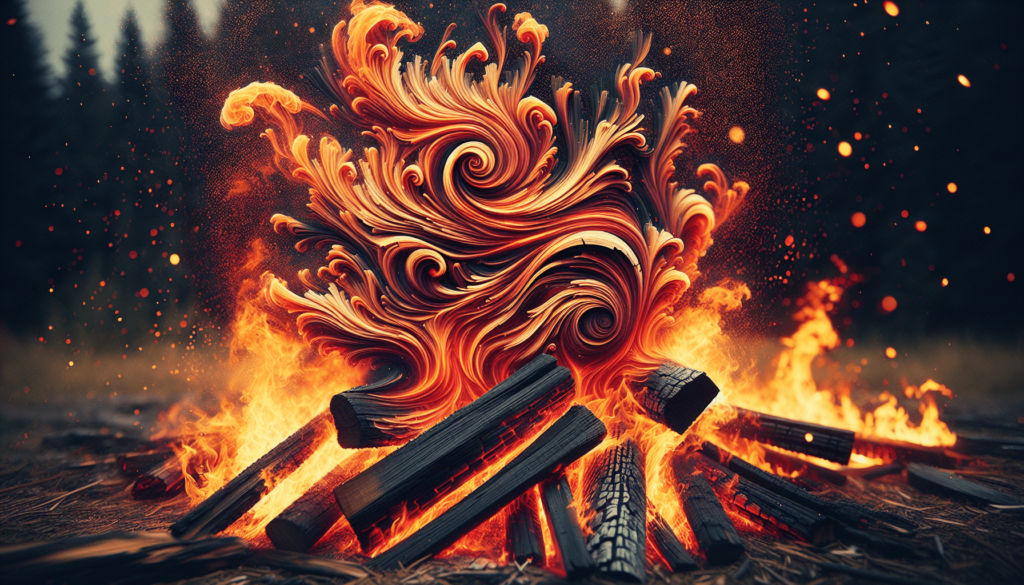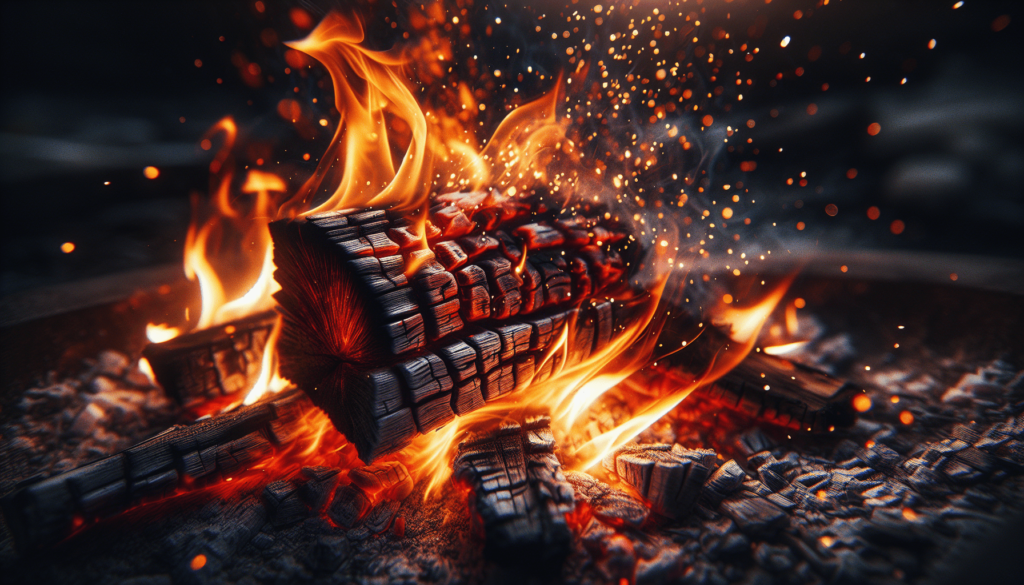I’ve often marveled at the simple yet profound act of burning wood. It’s mesmerizing to watch the flames dance and hear the crackling sounds. There’s something almost primal about it. When we talk about burning wood, we’re referring to combustion—a chemical process where wood reacts with oxygen, producing heat, light, and gases like carbon dioxide and water vapor. It’s an age-old method that’s found its way into our daily lives, from heating homes to cooking food. This article delves into the science behind it, unraveling why this process has fascinated humanity for centuries. Have you ever found yourself gazing at a crackling fire, wondering what exactly it is that you’re watching? What is it called burning wood?
I often ask myself this question, especially when I get lost in the beauty and simplicity of a campfire or a cozy fireplace. It might seem straightforward—after all, it’s just fire. But the process of burning wood is way more fascinating than it first appears. So, let’s dive into the world of burning wood and uncover its many layers, shall we?

The Simple Definition
Burning wood is often simply referred to as “combustion.” In layman’s terms, it’s the process of igniting wood and producing heat and light. But there’s more to it than meets the eye. When wood burns, it undergoes a series of complex chemical reactions that result in the familiar flames and glowing embers we know and love.
The Ingredients
To fully understand what burning wood involves, we need to know the main ingredients:
- Fuel (wood): The star of the show.
- Heat: Necessary to initiate the combustion.
- Oxygen: The invisible partner that sustains the fire.
When these three elements come together in the right proportions, we get combustion.
The Science Behind It
If you’re anything like me, the science of burning wood might not have been all that appealing in chemistry class. But bear with me. I promise it’s fascinating—like a backstage pass to a rock concert.
Stages of Burning Wood
Burning wood happens in three major stages:
- Drying (moisture evaporation)
- Pyrolysis (thermal decomposition)
- Combustion (oxidation)
1. Drying
First off, the wood needs to dry out. Even if it seems dry, most wood contains some moisture. When you light it, the heat evaporates this moisture, allowing the wood to reach a temperature where it can start to decompose.
2. Pyrolysis
Ah, pyrolysis—the term that always sounded like a spell from Harry Potter to me. This is where things get interesting. Pyrolysis is the process where the wood starts to break down under the influence of heat. At this stage, volatile gases are released, which contribute to the visible flames.
3. Combustion
Finally, we reach combustion. Here, the volatile gases and any remaining solid carbon in the wood react with oxygen, producing the fire we see. This stage gives off heat, light, and sometimes a bit of smoke and ash.
The Chemical Reactions
For my fellow nerds who appreciate a good equation, here’s what’s happening on a chemical level:
[ \text + \text_2 (oxygen) \rightarrow \text_2 (carbon dioxide) + \text ] [ \text_2\text{ (hydrogen)} + \text_2 (oxygen) \rightarrow \text_2\text + \text ]
Put simply, the carbon and hydrogen in the wood react with the oxygen in the air to produce heat, light, and byproducts like carbon dioxide and water vapor.
Types of Wood & Their Burning Qualities
Not all wood is created equal. Just like how some people are more fun at parties than others, some types of wood are better for burning. Let’s look at a few common types:
| Wood Type | Burn Quality | Heat Output | Smoke Production | Ease of Splitting |
|---|---|---|---|---|
| Oak | High quality, slow | High | Low | Difficult |
| Pine | Quick burn, resinous | Moderate | High | Easy |
| Birch | Quick burning | Moderate | Low | Easy |
| Maple | Long-lasting | High | Moderate | Moderate |
| Cherry | Pleasant aroma | High | Low | Moderate |
Oak
Oak is like the granddaddy of firewood. It burns slow and hot, making it ideal for those long winter nights. It’s dense and produces minimal smoke, but splitting it can feel like a workout.
Pine
Pine is a bit of a diva. It burns quickly and its resin-rich composition means it can produce a lot of smoke. It’s perfect for kindling but not so great for long-term heating.
Birch
Birch is the life of the party. It ignites quickly and burns brightly, although it doesn’t last as long as oak. Its peeling bark can act as natural fire starter, making it a camper’s best friend.
Maple
Maple strikes a nice balance. It burns long and hot, producing moderate smoke. While splitting it can be a bit of a chore, its heat output is worth the effort.
Cherry
Cherry brings the ambiance. It burns well and has a pleasant aroma, perfect for a cozy, scented experience. Like the others, it offers high heat with low smoke output.
Practical Uses of Burning Wood
We burn wood for various reasons—to cook, to stay warm, to create a cozy atmosphere. Let’s explore a few scenarios where burning wood is not just practical but also a delightful experience.
Heating
For centuries, wood has been a primary source of heat. Whether it’s a rustic cabin in the woods or an urban home with a wood-burning stove, the warmth from burning wood is both physical and emotional.
Cooking
From BBQ pits to wood-fired pizzas, burning wood adds unique flavors to food that you just can’t get from gas or electric stoves. The type of wood you use can even enhance the flavor of your meal.
Ambiance
There’s something almost magical about a crackling fire. It’s meditative and mesmerizing, serving as an excellent setting for relaxation, reflection, or even storytelling.

Environmental Impact
While burning wood has its undeniable charms, we should also consider its environmental footprint.
Emissions
Burning wood releases carbon dioxide, a greenhouse gas. However, unlike fossil fuels, the CO2 released from burning wood can be reabsorbed by trees, making it part of a shorter carbon cycle.
Particulate Matter
It’s not just gas emissions we need to think about. Burning wood can also produce particulate matter, which can have adverse effects on air quality and public health.
Sustainable Practices
The key to responsible wood burning is sustainability. Using wood from responsibly managed forests and investing in efficient stoves can mitigate some of the environmental impact.
Wood vs Other Fuels
How does wood stack up against other types of fuel? Let’s take a quick look.
| Fuel Type | Renewable | Heat Output | Environmental Impact | Cost |
|---|---|---|---|---|
| Wood | Yes | High | Moderate; Short Carbon Cycle | Variable |
| Natural Gas | No | Very High | High CO2 Emissions | Moderate |
| Coal | No | Very High | Severe Environmental Impact | Low |
| Electricity | Yes/No | Variable (depends on source) | Depends on Source | High |
Natural Gas
Natural gas is efficient and burns cleaner than wood, but it’s a non-renewable resource and contributes significantly to greenhouse gas emissions.
Coal
Ah, coal. It provides substantial heat but at a tremendous environmental cost. Its mining and burning result in severe ecological degradation.
Electricity
Electric heating can be renewable if sourced from wind, solar, or hydroelectric power. However, if it comes from coal or natural gas plants, it’s far from green.
Safety Tips for Burning Wood
Safety first, folks. Burning wood can be a significant fire hazard if not handled correctly. Here are some tips to help you enjoy your fire safely.
Proper Ventilation
Always ensure your fireplace or stove is well-ventilated. Poor ventilation can result in carbon monoxide buildup, which is extremely dangerous.
Regular Maintenance
Clean your chimney or stove regularly to prevent creosote buildup, which can lead to chimney fires.
Safe Storage
Store your wood in a dry place to prevent mold and pests. Wet wood not only burns poorly but can also produce excessive smoke and creosote.
Fire Safety Equipment
Always keep a fire extinguisher and a smoke detector nearby. You may never need them, but it’s better to be safe than sorry.
The Joy of Burning Wood
Burning wood isn’t just a practical activity; it’s an experience. It connects us to nature and to each other, whether through shared meals cooked over an open flame or stories told around a hearth. The simple act of lighting a fire can become a cherished ritual that adds warmth and meaning to our lives.
So next time you find yourself mesmerized by the dancing flames, take a moment to appreciate the art and science behind what is called burning wood.

